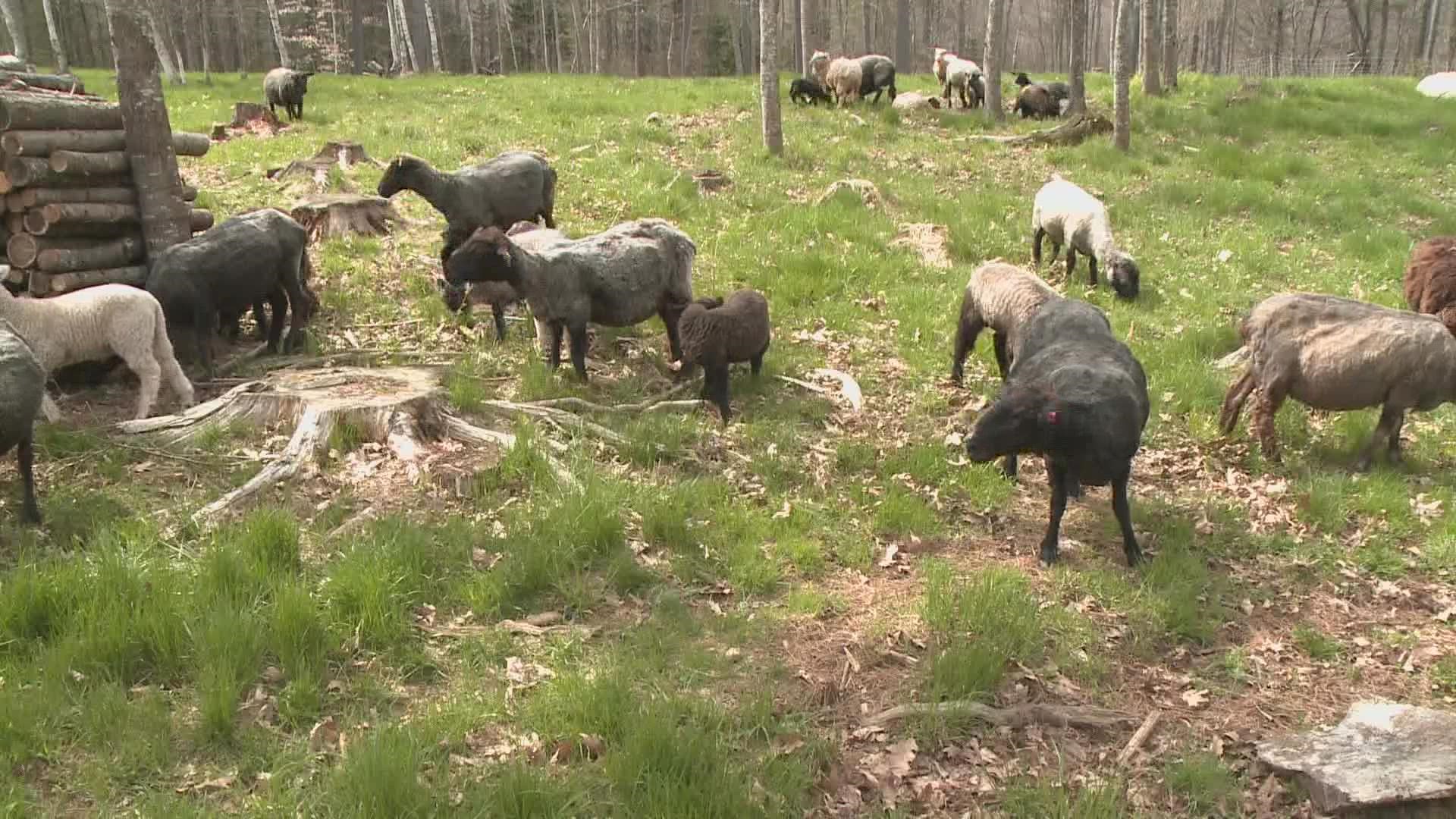WISCASSET, Maine — Agroforestry is a way of farming that goes back hundreds of years. It uses existing forest land to create pastures to raise livestock and crops, according to U.S. Department of Agriculture.
The practice reduces stress on animals by providing shade and shelter year-round and helps diminish the impact of climate change.
Some farm-advocacy groups have said agroforestry could provide Maine farms dealing with contamination from industrial chemicals known as PFAS a new path to diversifying.
Jeff Burchstead and his family purchased more than 100 acres of forest land 20 years ago. Up until the 1960s, the land had been leased as a livestock farm. Over time, hundreds of trees have been removed, converting forest land into lush pastures.
"We take out the lower quality trees, ones that have fir pulp, or dead or dying stuff," Burchstead explained.
Buckwheat Blossom Farm raises dozens of sheep, both lambs, and ewes, selling everything from milk to raw wool, yarn, comforters, and socks.
The farm also has goats, chickens, and ducks, utilizing agroforestry.
Part of that practice involves incorporating trees and foliage in areas for animals to graze on, known as silvopasture.
The animals also don't eat in the same place every day.
"They go and chose where they want to eat," Burchstead added.
Burchstead so far has cleared 12 acres of his 140-acre farm, giving the animals plenty of room to graze. A lot of the sections are covered with hay, which he puts out daily in the winter.
Besides providing his livestock a shaded and sheltered environment, agroforestry is helping to reduce the farm's carbon footprint. Burchstead uses horses named Bill and Max that are draft breeds that help haul hay and till the ground.
Agroforestry could also be a new path forward for farms tainted by so-called "forever chemicals."
More than 14 farms have been identified as having concerning levels of PFAS chemicals in their soil, water, livestock and crops as a statewide investigation continues. The contamination came from the spreading of wastewater sludge as fertilizer, on cleared farmland.
Sarah Alexander, executive director of the Maine Organic Farmers and Gardeners Association, said some impacted farms could possibly return forest land back into production.
"Absolutely, looking at other portions of their land that may have not been spread could be a good solution," Alexander said.
As for Burchstead, whose farm was never spread with sludge, plans to clear more trees with the hope of raising as many as 100 ewes.
"I am changing my methods all the time to adapt to what my animals are telling me and my land is telling me," Burchstead explained.
For more information on agroforestry, from the University of Maine Cooperative Extension Service visit this link.

